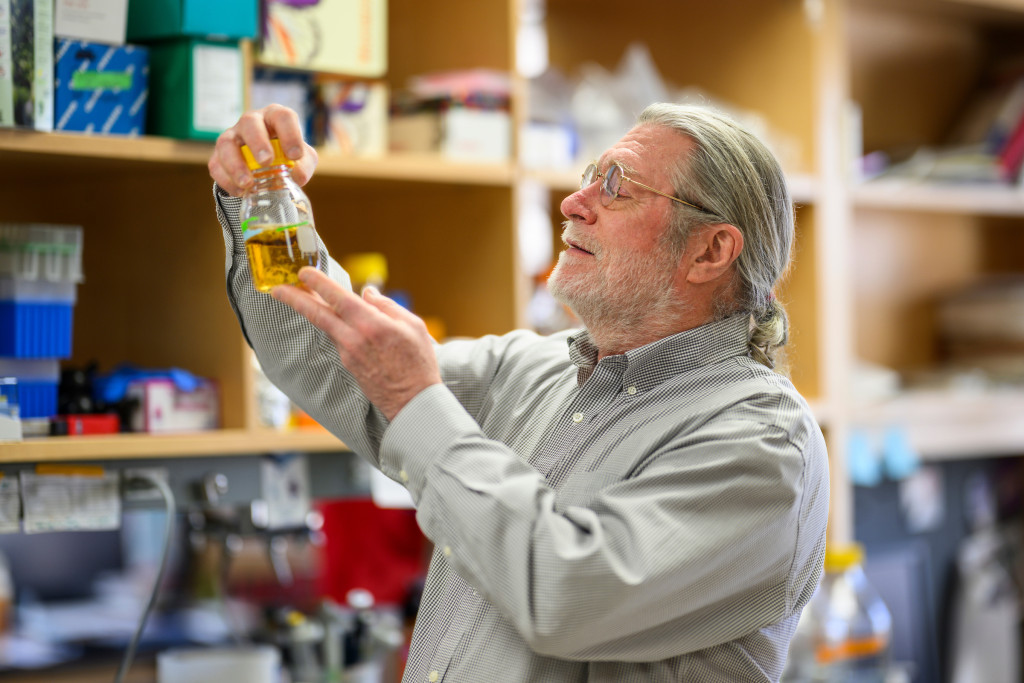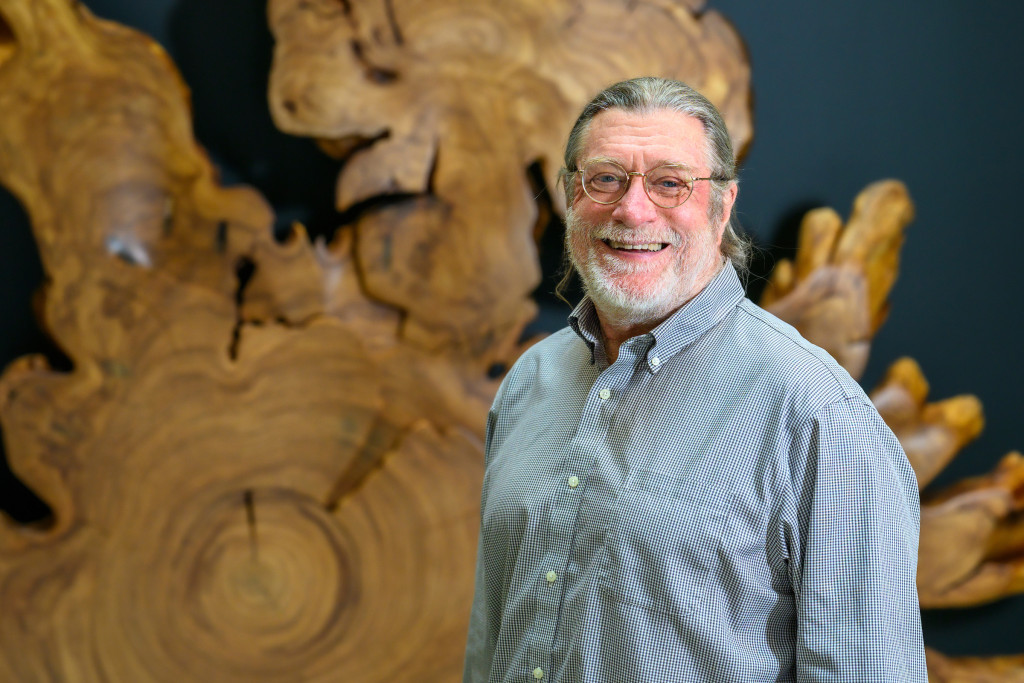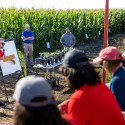UW biochemists engineered a poplar tree that produces a high-demand industrial chemical. It was a surprise discovery only made possible by sustained investment in research.

UW–Madison biochemistry professor Brian Fox helped to develop a genetic alteration in poplar trees so they can produce an industrial chemical commonly used as a preservative and in synthetic fibers. Photo: Althea Dotzour
Research at the University of Wisconsin–Madison drives innovation, saves lives, creates jobs, supports small businesses, and fuels the industries that keep America competitive and secure. It makes the U.S.—and Wisconsin—stronger. Federal funding for research is a high-return investment that’s worth fighting for. Learn more about the impact of UW–Madison’s federally funded research and how you can help.
Brian Fox, the Marvin J. Johnson Professor in Fermentation Biochemistry at the University of Wisconsin–Madison, tinkers with the way living things use chemistry to turn their own blueprints, DNA, into the processes that make a healthy organism go.
Over more than three decades, federal agencies including the Department of Energy, National Institutes of Health and National Science Foundation have supported his efforts to study that basic biological chemistry — and to engineer changes to organisms that can benefit humanity.
Fox’s current research focuses on a genetic alteration to poplar trees, equipping them to produce an industrial chemical. It was a surprise discovery that was years in the making and only made possible by long-term investment in his line of research.
“I had no idea we were going to find a gene that would do such a specific and useful thing,” he told UW News in a recent interview. “But here we are, having turned basic research on some gene families into three patents and a process that makes an industrial chemical in a tree.”
How do you engineer changes in an organism like a tree?
Every one of your cells and a plant’s cells has a bunch of genes that encode the cellular process for making proteins called enzymes. And an enzyme does something. An enzyme grows your hair. An enzyme grows your fingernails. Enzymes digest your food. So, we find a gene that can do something valuable, like encode an enzyme that has a new capability. We put that gene in a new context, into a plant or a microbe — like bacteria or yeast — and that plant or microbe can do something that it couldn’t do before. Now there are cows that are engineered to make insulin in their milk, a yeast engineered to make palm oil, microbes making renewable bioplastics. This diversity of research leads to new products that contribute to the full spectrum of human needs.
What is the goal of your research with poplar trees?
We found a gene that we could put to work in a very common kind of tree, poplar trees, that are grown all over the world for forest products like wood and paper and biofuels. Now, our trees have a new talent — they make new enzymes and actually yield an almost pure form of parahydroxybenzoate. This is widely used as a preservative, an ingredient in synthetic fibers like rope, sports equipment and spacesuits, and as a precursor to pharmaceuticals that otherwise take a lot of energy and chemistry in a factory to manufacture from oil. And the gene has no impact on the health of the tree. With our collaborators at the University of British Columbia, we’re growing thousands of these trees right now, and we’re stacking new genes in to give even better properties.

Fox: “America has had the strategic foresight to provide stable support for a diverse range of basic research. That work leads to discoveries that … improve our lives in unexpected ways.” Photo: Althea Dotzour
Why is federal research funding so important to a project like this?
Even after you find some cool genes and figure out what they do, it takes more effort and know-how to put them into a tree. Then it takes a lot of time to grow a tree and grow more generations of trees to improve on your first effort. That takes the kind of long-term investment in science that we’ve been fortunate to receive from public support. America has had the strategic foresight to provide stable support for a diverse range of basic research. That work leads to discoveries that move on to become surprising new technologies that improve our lives in unexpected ways and become successful companies and new opportunities we build on.
What’s the taxpayer’s benefit for funding your work?
One would be an easier, more efficient way to produce this very useful chemical. Another is that we take this as a base of knowledge and find more new tricks to teach plants — there are drugs, antioxidants, cosmetics, food preservatives, all kinds of things closely related to the molecules we’re making. And we’re also training our children to have the skills to continue this work for more benefit.
How are you training future scientists?
We have the Biotechnology Training Program, an NIH-funded program which was created by an act of Congress about 35 years ago. We train Ph.D.-level scientists to have experience in both biological and physical sciences — microbiologists who can talk to chemical engineers and engineers who can work with cancer biologists to build devices to help cancer patients. We’ve trained over 300 students through this program. They have become successful as leaders in industry, as entrepreneurs who start companies, as workers for the federal government and national labs, or as successful academics. They are the talented people who keep this American success going, creating intellectual property across the entire technical and scientific and industrial spectrum.
Tags: federal relations, research




